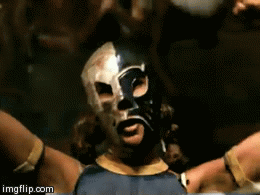Andrew Goodwin
“Music videos ignore common narrative as they are essentially advertisements. As consumers, we make your own meaning of a song in our minds: a music video can anchor meaning and gives the record company/artist a method of anchoring meaning.”
Goodwin explains his theory by identifying six key conventions within a music video:
1) A relationship between the lyrics and the visuals which illustrate, amplify or contradict the lyrics.
This convention explains how Goodwin noticed that within music videos, visuals either follow the lyrics and nature of the song completely or have absolutely no relevance.2) Thought beats: seeing the sounds (the relationship between the music and the visuals, which illustrate, amplify or contradiction the music.)
Goodwin found that the visuals within a music video may be edited in time to the beats/lyrics/change in pace of a music video. He also stated that these shots are often repeated during repetitive lyrics to emphasis the repetition in the music.3) Genre-related style and iconography present.
Goodwin found that most artists tend to have a trend of repeating certain patterns within their music videos in order to establish their 'trademark' within their videos which allows viewers to easily identify the artist's videos. Genre is shown through mise en scene and even music video genre, the genre can be seen through the location of the music video, for example a rock music video is often filmed in a concert arena.An example of iconography is Amy Winehouse's signature hair and thick eyeliner which is easily recognised even from a silhouette of the singer.
4) Multiple close-ups of the main artist or vocalist: the creation of a star image to promote a recognisable brand image.
Goodwin identified that close-ups of artists are used lots within music videos in order to promote not only the song but also the artist themselves. This convention is most common in music videos which feature a female as the main character or artist, provocative/compromising angles are often shown of the woman in order to sexualise the artist in guidance with Laura Mulvey's Male Gaze Theory causing the audience to perceive the woman in a sexual way.5) Voyeurism often plays a major part, especially in relation to females.
Goodwin said that a large amount of music videos use voyeuristic angles of women in order to grab the attention of the male audience and increase their interest in the artist.
Christina Aguilera - Dirrty:
6) Intertextual references to other media texts may be present, especially in humorous videos.
Goodwin recognised that it was not uncommon to recognise that lyrics or visuals of a song may be directly linked to another media text on purpose. This is used to engage the audience, it can often engage the audience and provide them with immediate gratification their recognise the cross reference.
An example of a cross reference is Iggy Azalea's music video for her song Fancy which is based on the movie clueless. It follows the same narrative as the music video and even has matching costumes to the original film.





No comments:
Post a Comment